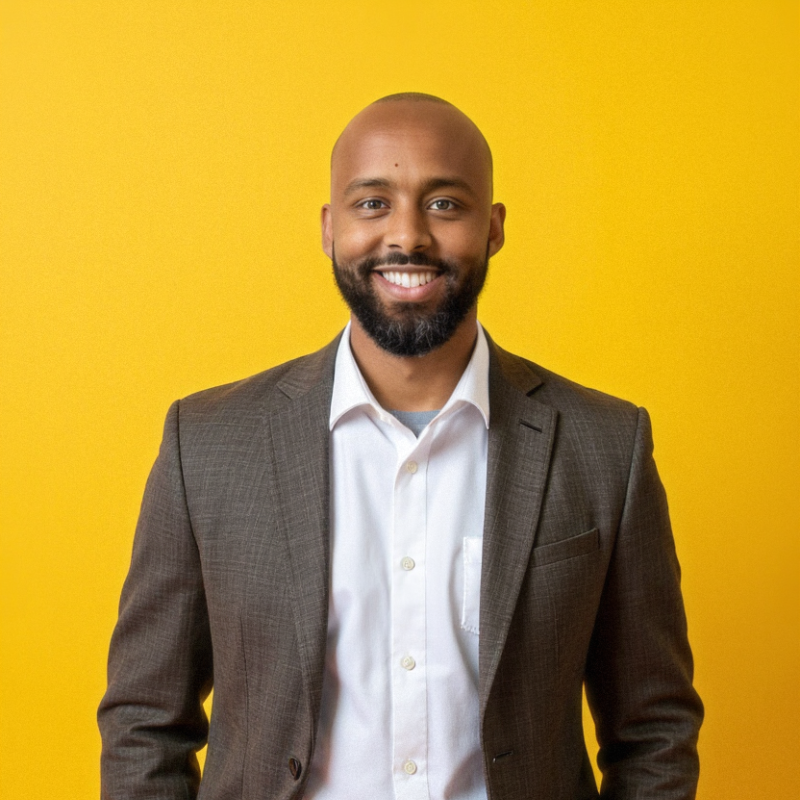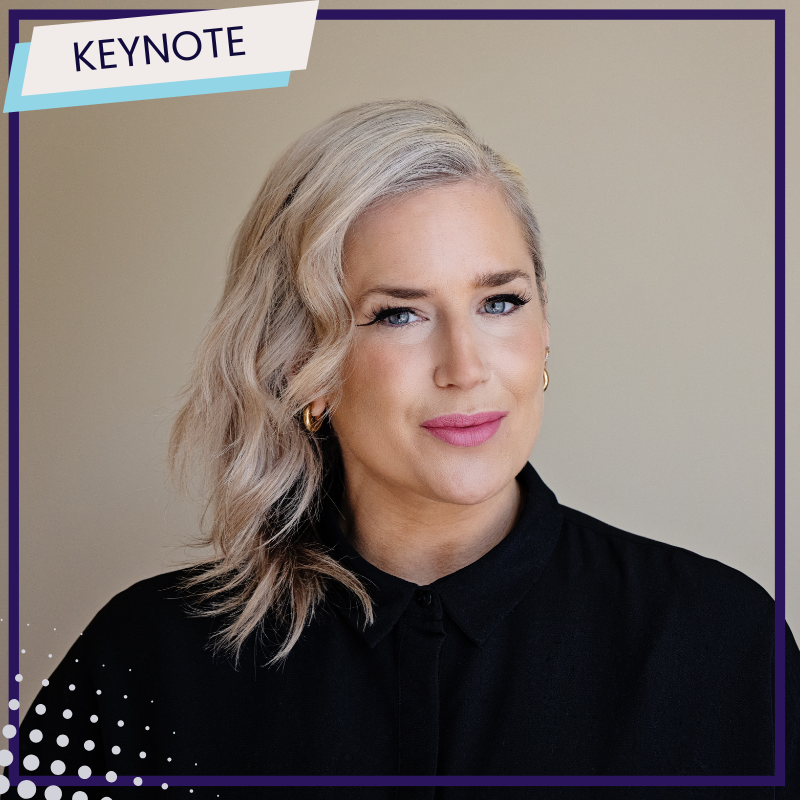-
-
How can the C-suite lead authentically and inspire their organisation with a clear future-focused vision and purpose?
-
Building trust through transparent and empathetic leadership.
-
How are the executive leaders driving change and transformation whilst fostering a thriving workplace culture?
-
What’s next? Key priorities for the Leadership Suite in shaping the future of work.
-
-
-
Successfully aligning HR strategies with the company’s vision, mission, and strategic priorities.
-
How can you tailor change initiatives to fit diverse cultural differences across global teams as well as adhering to legal implications in different regions?
-
How can you build trust and engagement from employees, so they are more open to change, how do you deal with change resistance or fatigue?
-
Ensuring that changes contribute to the long-term success and stability of the organisation.
-
-
Chairperson
-
Chairperson
-
-
-
-
-
-
What does the next decade of work look like?
-
Balancing tech-driven transformation with human-centered leadership.
-
Predictions for workforce trends and HR’s evolving role.
-
-
-
-
-
-
-
-
-
-
-
-
In this powerful conversation, Anna Whitehouse—founder of Mother Pukka and the driving force behind the Flex Appeal campaign—shares her journey from frustrated working mother to leading voice in the movement for flexible work. From grassroots activism to national reform, Anna played a pivotal role in the passing of the 2024 Flexible Working Bill, granting employees the right to request flexibility from day one. Join us as she reflects on the highs, the hurdles, and what’s next in the mission to embed inclusivity, balance, and fairness into the fabric of work.
-
The Leadership Pipeline Institute is joined by one of their highly valued clients, Fujitsu, who operate in over 70 countries, employing around 124,000 globally, and investing ¥123 billion p.a. in R&D on cutting-edge tech and quantum computing.
They will share the highs, and the challenges, of how they...
- Co-created leadership portraits, bringing transparency to every leadership role, in the business.
- Embarked on an international roll out of transition programmes for their Functional Leaders, Leader of Leaders and their Leaders of Others, going way beyond skills.
- Are installing the Leadership Pipeline architecture across all of their leadership talent offerings
...And what they are seeing in the business today
-
A quick ice-breaker session you can get to know your fellow attendees.
-
A quick ice-breaker session you can get to know your fellow attendees.
-
Group work activity where groups will identify key issues, brainstorm ideas and form a strategy that can be implemented in the workplace.
-
In a workforce spanning four or more generations, how can organisations balance the needs of ageing employees while fostering innovation and engagement among younger workers without creating generational divides?
Group work activity where groups will identify key issues, brainstorm ideas and form a strategy that can be implemented in the workplace.
-
-
-
-
-
-
-
- Disneyland Paris key elements and global megatrends to integrate in any L&D strategy.
- Disney University, an insight about the current transformation and key success factors.
- What innovation is Disneyland currently considering implementing in the future.
Partake in live Q&A with Bruno following his keynote.
-
-
How can CHROs and talent leaders harness AI and emerging technologies to drive workforce transformation while maintaining a people-first approach?
-
How can organisations optimise decision-making using AI-driven insights on talent acquisition, workforce planning and leadership development?
-
Striking the balance between automation and human interaction and using technology to enhance, rather than replace, the human element of talent management.
-
The role of AI and technology in fostering continuous learning, upskilling, and workforce agility to meet evolving business needs.
-
Navigating ethical considerations and bias in AI-powered talent management and ensuring responsible use.
-
-
-
What does a strong learning culture look like, and how does it contribute to long-term business success?
-
How can leadership champion and model a learning culture to drive engagement at all levels?
-
The role of technology to make learning personalised and accessible to all.
-
Encouraging a Growth Mindset and strategies to engage employees and overcome resistance to continuous learning.
-
-
-
Strategies for building a positive, inclusive, workplace culture that’s built on respect, transparency and trust.
-
The role of leaders in inspiring and guiding teams, what qualities must good leaders have?
-
Ensuring psychological safety, how can you create an environment that encourages innovation and creativity and reduces the fear of failure?
-
Building synergies among the different generations in the workplace.
-
Embedding DEI as a core element of workplace culture to foster belonging, equity, and diverse perspectives at all levels.
-
-
-
Understanding the strategic value of developing leaders and nurturing talent at all levels within the organisation.
-
Techniques for recognising, assessing, and fostering leadership potential among employees to build a strong talent pipeline.
-
Designing effective leadership and talent development programmes. What are the key elements of successful initiatives that drive long term growth?
-
Integrating classic leadership theories with modern talent development strategies, including coaching, mentoring, upskilling, and digital learning.
-
-
-
Creating meaningful employee experiences that drive engagement.
-
How is EVP evolving to meet changing workforce expectations?
-
What leaders must do to turn engagement strategies into action.
-
Empowering employees to make changes to improve their work experience directly.
-
What operational aspects can you improve to enhance employee experience?
-
-
-
How can L&D leaders design learning strategies that boost engagement, retention, motivation, and performance?
-
What types of learning initiatives resonate most with employees? How can organisations leverage employee feedback and surveys to refine L&D programmes?
-
What key learning and development metrics should be tracked and benchmarked to measure the impact and effectiveness?
-
The role of AI and data analytics in personalising learning, understanding development needs, and predicting engagement trends.
-
-
-
How can HR use technology to enhance collaboration, connection, and productivity?
-
When should organisations use technology for collaboration, and when is in-person interaction essential?
-
How can AI, digital platforms, and automation streamline teamwork across dispersed teams?
-
How can digital tools reinforce organisational purpose and drive long-term engagement?
-
How can virtual networking and AI-driven tools recreate ‘water-cooler’ moments and strengthen workplace connections?
-
-
-
How shifting workforce needs, leadership priorities, and technological advancements are reshaping the role of L&D leaders.
-
Exploring emerging trends and their influence on structures and future strategies.
-
Identifying critical skills for long-term success and how L&D leaders can enhance workforce capabilities.
-
Ensuring L&D initiatives align with overall business objectives and drive measurable results.
-
Shifting L&D from support role to strategic advisory role within the business.
-
-
-
Beyond AI, what skills will be critical for the next decade?
-
How L&D leaders can prepare their workforce for automation and emerging technologies?
-
Creating adaptive learning ecosystems for ongoing skill development.
-
Balancing human-centric skills with AI-driven efficiencies in the workplace.
-
-
- Context matters. Today’s executives need the skills to navigate rapid changes in the business environment, from technological advances to geopolitical turbulence.
- Take AI. It can, for instance, help your teams communicate—but distinctive writing needs a human touch. Following the pack will not do, for executives or L&D teams.
- It is a similar story with business decision-making. As AI becomes more powerful, being able to think critically, as individuals and in groups, gets only more important.
- Unstable times in politics and trade put a further premium on clear thinking, and on clarity about the state of the world and the prospects for its future.
- To help L&D teams adapt to a more complex world, Economist Education is developing a portfolio of courses for modern executives. This talk explains how.
-
- How can we balance people, purpose, and performance to redefine success in today’s organisations?
- What does it take to embed people-first principles into digital transformation and AI initiatives?
- How can CHROs lead with both empathy and accountability to shape culture from the top?
- What strategies truly attract, retain, and grow talent in a trust-based, inclusive culture?
- How is the role of the CHRO evolving to become a strategic architect of the future workplace?
.
-
- Exploring the key traits, values, and expectations of different generations. What are their differences, their similarities, and how can you use this knowledge when crafting a learning programme?
- Strategies for creating engaging and effective L&D initiatives tailored to your employee’s needs and preferences.
- What techniques can be used to promote understanding and collaboration between all generations in the workplace?
- How can you use Gen-Z’s affinity for digital learning to support and upskill workers from other generations.
- How do you support managers who are perhaps overwhelmed by the demands of younger generations?
-
- How to apply the FOCA framework to structure and create effective scenario-based interactive videos.
- How to design branching scenarios that engage learners and reinforce decision-based learning.
- How to use AI video tools to rapidly produce interactive content without needing advanced video editing skills or course authoring software.
- When to use a scenario and when not to.
-
- Join us as we share insights into how AVEVA’s intranet, ‘OneSpace’, is transforming how they connect their diverse, rapidly expanding global workforce
- Empowering HR and Comms teams to reach and engage a dispersed workforce
- Using technology to create a single, unified platform for company news, data management and social collaboration
- Creating seamless and easy access for all employees, no matter where they are
- Utilise digital tools to bring company values and culture to life
-
Reigniting joy, growth and meaning in the age of uncertainty.
Somewhere along the way, work got heavy. Rushed. Siloed. Stripped of the energy and meaning that once made it fulfil. But it doesn’t have to stay that way. What if the key to making work feel good again, more human, hopeful, and high-performing is learning?
In this energising, experiential and provocative session, we’ll explore how learning, when reimagined, becomes more than upskilling it becomes a force for connection, resilience, and growth. We’ll dig into the science of motivation, the rise of AI, the crisis of disengaged managers, and showcase bold case studies from organisations putting joy and learning at the heart of their culture. Expect data, stories, and a clear path forward.
Because in a world of complexity, learning might just be the most powerful lever we have left.
-
details coming shortly...
-
In today's world, leaders are navigating constant VUCA - Volatility, Uncertainty, Complexity, and Ambiguity. This external turbulence, from geopolitical shifts to social divisions, is putting unprecedented pressure on our workplace cultures. We are also seeing that traditional conversations around "diversity" can, at times, create fatigue and division, detracting from the ultimate goal. This session argues for a strategic shift in focus: away from reactive initiatives and towards proactively building a resilient culture of inclusion. We will explore how leaders, as the primary custodians of culture, can authentically embed the core pillars of respect, belonging, empowerment, and progression into their organisation's DNA. This is about more than just policies; it's about changing mindsets and dismantling the systemic barriers that prevent any individual from thriving. This talk provides a practical roadmap for leaders to foster a culture where everyone, regardless of their background, feels valued and has the opportunity to succeed, creating a powerful buffer against divisive outside influences and unlocking the full potential of their entire workforce.
-
- Building a culture of creativity and making it happen.
- Human judgment at the heart of an AI-driven future.
Speaker -
- Capabilities frameworks aligned to business priorities
- Building clear people roadmaps that connect skills to long term growth
- Accelerating people progress through technology
-
coming shortly...
Christelle Beneteau, Chief People Officer, Ferring Pharmaceuticals
Becky Kearns, Founder & CEO, Fertility Matters at Work
-
-
How is GenAI reshaping talent acquisition, workforce planning, and employee engagement?
-
How can HR leaders prepare employees for an AI-augmented workplace?
-
What does the skills landscape look like and what strategies should be put in place for reskilling and upskilling the workforce?
-
Addressing bias, fairness, and compliance in AI-driven decision-making.
-
Practical applications and steps to integrate GenAI into HR functions.
-
-
The traditional performance review is broken. In this workshop, we'll reveal how we at Remote fixed it, transforming our process into a powerful 48-hour cycle. We’ll delve into the common pain points of traditional reviews—from manual bottlenecks and fragmented feedback to recency bias—and share our strategic shift to a real-time, data-driven model. Learn how we leveraged these key insights to create a culture of continuous feedback that empowered our managers and employees. You'll leave with practical, actionable steps to revolutionize your own performance management process and drive better outcomes for your organisation.
-
-
-
How can organisations design career pathways that meet the changing expectations of today’s workforce while aligning with business needs?
-
Redefining career progression from rigid, hierarchical paths to fluid, non-linear opportunities.
-
Strategies to create an internal talent marketplace that enables employees to move across functions, departments, and geographies.
-
Shifting the focus from tenure to skills and competencies for a more agile workforce.
-
Using technology and data analytics to personalise career development and enhance mobility.
-
-
· Why the future of learning depends on transfer, not delivery
· The transfer gap: why most training fades before it performs
· Three multipliers that make learning stick:
o The learner
o The design
o The ecosystem
· Practical actions you can apply immediately to strengthen each and multiply transfer
-
-
Exploring strategies to integrate peer-driven learning, mentoring, and collaboration into your L&D programs.
-
Leveraging digital platforms to enhance knowledge sharing and real-time learning.
-
How can collaborative and social learning be tracked and measured to assess impact?
-
Building a learning culture where employees actively share and apply knowledge.
-
-
-
What does the C-Suite expect and need from learning leaders?
-
Positioning L&D as a business driver
-
How can L&D drive revenue, productivity, and workforce agility?
-
Demonstrating long-term ROI and getting executive buy-in for large-scale learning initiatives.
-

















